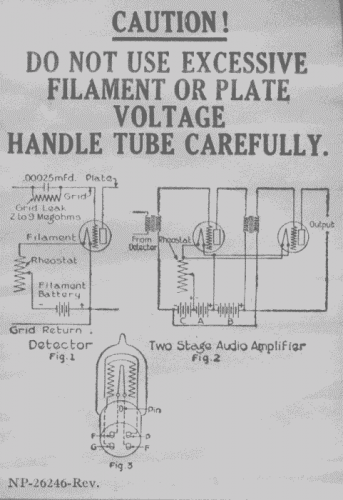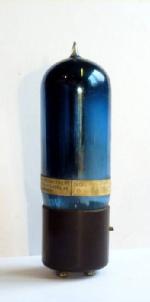
UV199
|
Varianten
|
|||||||||||||||||||||||||||||||||
|
Klicks: 3847 Antworten: 0
UV199 (UV199) socket
|
|
|
Konrad Birkner † 12.08.2014
22.Apr.11 |
1
An unusual socket or UV199 caused some bewilderment: The pin allocation appeared to deviate from the usual one.
P is found at 01:30; F+ at 04:30; G at 07:30; F- at 10:30. We had studied, made hypotheses like manufacturers error etc. All wrong: The solution is found looking at the contact springs. They are not radially arranged as usual in such bayonet sockets, but tangentially. The contacts are rotated by 90° ccw in top view (cw in bottom view) against the terminals. Here in top view
and in bottom view
Fazit: it is always good to take a second look! Thanks to Peter den Boer for the socket pictures and to Alan Larsen and Alan Douglas for advice. KoBi |
Ende Forumsbeiträge zur Röhre
| Datenkonformität | Mehr Informationen |








